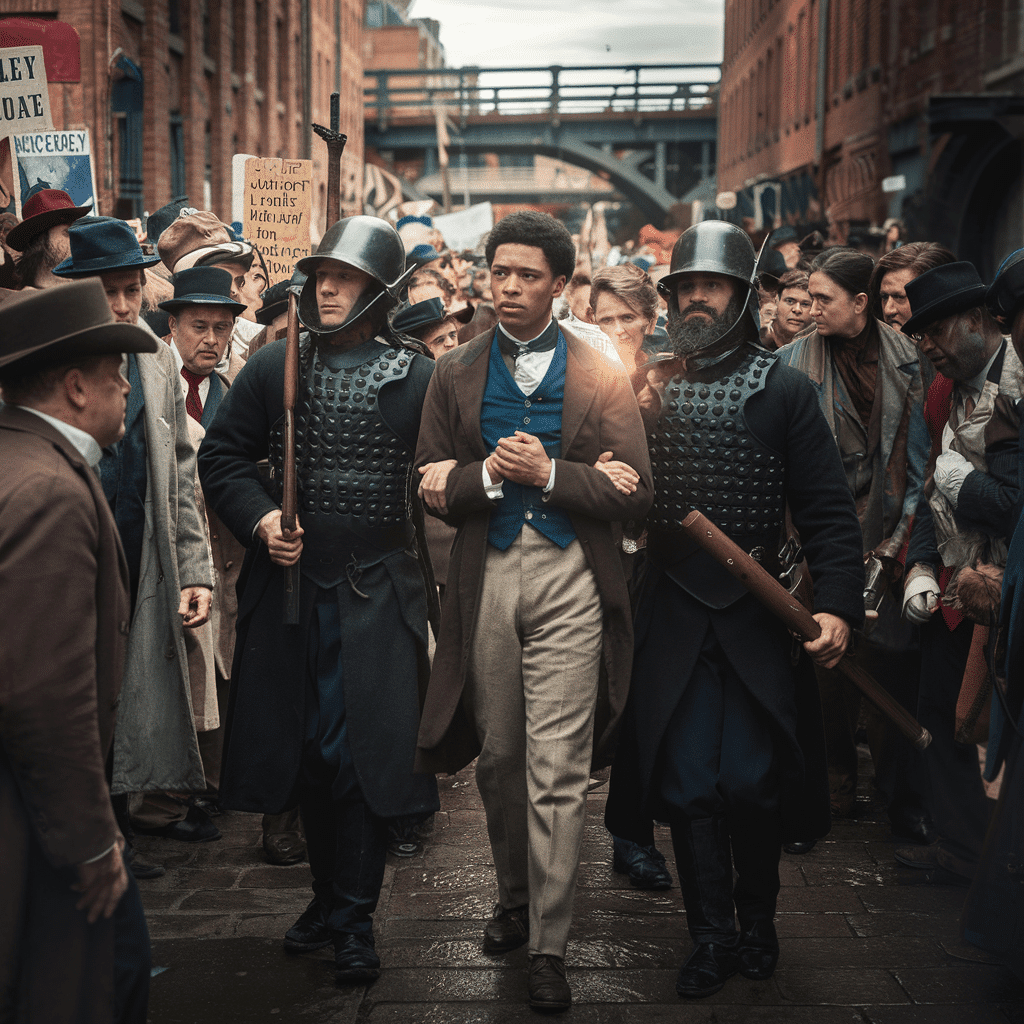In a world where the concept of freedom is often taken for granted, the story of Anthony Burns serves as a poignant reminder of the struggles faced by those who fought for their liberty. Born into slavery in Virginia in 1834, Burns’ journey to freedom was fraught with challenges that highlight the complexities of the legal and moral landscapes of his time.
This blog post will explore his story, the historical context of slavery in America, and the broader implications of choice and servitude in our lives today.
The Early Life of Anthony Burns
Anthony Burns was born on May 31, 1834, in Stafford County, Virginia. His mother worked as a cook for their owner, John Sutle, while his father supervised other slaves in a stone quarry. After the death of Sutle and his wife, Burns became the property of their son, Charles Sutle. Despite the oppressive circumstances, Burns sought education and secretly learned to read, which was a dangerous endeavor for a slave.
At the age of 13, Burns suffered a severe injury while working in a sawmill, which led to a period of recovery during which he found faith in Jesus and was baptized into the Baptist Church. His newfound faith compelled him to preach to other slaves, a violation of Virginia law that could lead to severe punishment.
The Escape to Freedom
In 1854, while working in Richmond, Burns learned about Boston, Massachusetts, a city known as a haven for escaped slaves. He managed to stow away on a ship bound for Boston, where he found work as a pie maker. However, a letter he wrote to his brother back in Virginia inadvertently revealed his location to his former master, Charles Sutle. This letter led to Burns’ arrest under the Fugitive Slave Act of 1850, which allowed for the forcible return of escaped slaves.
The Fugitive Slave Act and Its Implications
The Fugitive Slave Act was a controversial law that mandated the return of escaped slaves to their owners, even in free states. It stripped slaves of their rights to testify in court and denied them a jury trial. The law incentivized slave catchers to capture any black person, regardless of their legal status, leading to widespread fear among the African American community in the North.
In Boston, a warning poster cautioned colored citizens to avoid police officers, who were empowered to act as slave catchers. This atmosphere of fear and oppression set the stage for Burns’ trial, which drew significant attention from abolitionists and the public.
The Trial and Public Outcry
On May 24, 1854, Burns was arrested and taken to the courthouse, where he was surrounded by armed guards. His trial began amidst a backdrop of large abolitionist conventions in Boston, where prominent figures were advocating for the end of slavery. When the Boston Vigilance Committee learned of Burns’ situation, they mobilized to rescue him, leading to a massive protest outside the courthouse.
Despite the public outcry, the judge ruled in favor of Sutle, ordering Burns to be returned to Virginia. The decision sparked outrage, and efforts to purchase Burns’ freedom were made, but Sutle ultimately refused to sell him.
The March to Return
On June 2, 1854, as Burns was escorted to a ship that would take him back to Virginia, approximately 50,000 Boston citizens lined the streets in protest. The scene was chaotic, with citizens booing and hissing, while a large contingent of police and military surrounded Burns to ensure his return. This moment highlighted the deep divisions in American society regarding slavery and the lengths to which people would go to fight for justice.
Life After Slavery
Upon his return to Virginia, Burns endured four months in Lumpkin’s slave jail, which left him in poor health. He was later sold to a slave trader, David McDaniel, in North Carolina. However, Burns’ story did not end there. His plight gained national attention, and through the efforts of Pastor Leonard Grimes, Burns was eventually purchased for $1,300, a significant sum at the time, equivalent to about $50,000 today.
Burns was finally freed on March 7, 1855, and a crowd of a thousand people welcomed him back to Boston. He later pursued theological studies at Oberlin College and became a pastor, despite facing discrimination and challenges due to his past.
The Spiritual Implications of Choice
The story of Anthony Burns is not just a historical account; it serves as a metaphor for the choices we face in our lives today. In John 8:36, it is stated, “If the Son therefore shall make you free, you shall be free indeed.” This verse invites reflection on the nature of freedom and the choices we make regarding whom we serve.
Just as Burns was caught in the chains of slavery, many today find themselves in various forms of bondage—be it addiction, negative self-perception, or societal pressures. The Bible speaks to this condition, reminding us that we have the power to choose whom we will serve. Joshua 24:15 urges us to choose this day whom we will serve, emphasizing the importance of making conscious decisions about our allegiances.
Conclusion
The journey of Anthony Burns illustrates the struggle for freedom and the importance of choice in our lives. His story is a testament to the resilience of the human spirit and the power of community in the fight against oppression. As we reflect on his life, let us consider our own choices and the allegiances we form. In a world filled with distractions and temptations, may we choose to serve that which leads to true freedom and fulfillment.
In the words of the Apostle Paul, we are reminded that while we may struggle with our human nature, we have the opportunity to yield ourselves to God, who empowers us to live righteously. Let us embrace this freedom and strive to make choices that reflect our commitment to a higher purpose.

